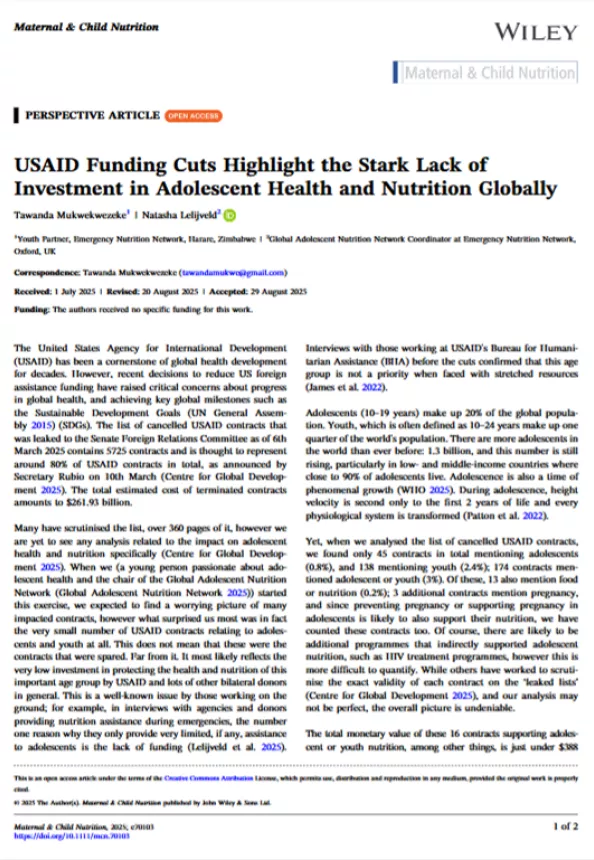USAID Funding Cuts Highlight the Stark Lack of Investment in Adolescent Health and Nutrition Globally
Publication details
The United States Agency for International Development (USAID) has been a cornerstone of global health development for decades. However, recent decisions to reduce US foreign assistance funding have raised critical concerns about progress in global health, and achieving key global milestones such as the Sustainable Development Goals (UN General Assembly 2015) (SDGs). The list of cancelled USAID contracts that was leaked to the Senate Foreign Relations Committee as of 6th March 2025 contains 5725 contracts and is thought to represent around 80% of USAID contracts in total, as announced by Secretary Rubio on 10th March (Centre for Global Development 2025). The total estimated cost of terminated contracts amounts to $261.93 billion.
Many have scrutinised the list, over 360 pages of it, however we are yet to see any analysis related to the impact on adolescent health and nutrition specifically (Centre for Global Development 2025). When we (a young person passionate about adolescent health and the chair of the Global Adolescent Nutrition Network (GANN)) started this exercise, we expected to find a worrying picture of many impacted contracts, however what surprised us most was in fact the very small number of USAID contracts relating to adolescents and youth at all. This does not mean that these were the contracts that were spared. Far from it. It most likely reflects the very low investment in protecting the health and nutrition of this important age group by USAID and lots of other bilateral donors in general.
Key messages
- Adolescents make up 20% of the global population. There are more adolescents in the world than ever before: 1.3 billion, and this number is still rising.
- However, when we analysed the leaked list of cancelled USAID contracts, we found only 174 mentioned adolescent or youth (3%). Of these, only 16 were about adolescent/youth nutrition (0.3%).
- In a list of supposedly ‘retained’ USAID contracts, only 3 of 909 (0.3%) mention ‘adolescents or youth’ and ‘food or nutrition’.
- Our paper demonstrates that donor investments in adolescent nutrition remain woefully inadequate.
